A Tourist’s Guide to Rojava’s History
By Lucas Chapman & Ali Ali
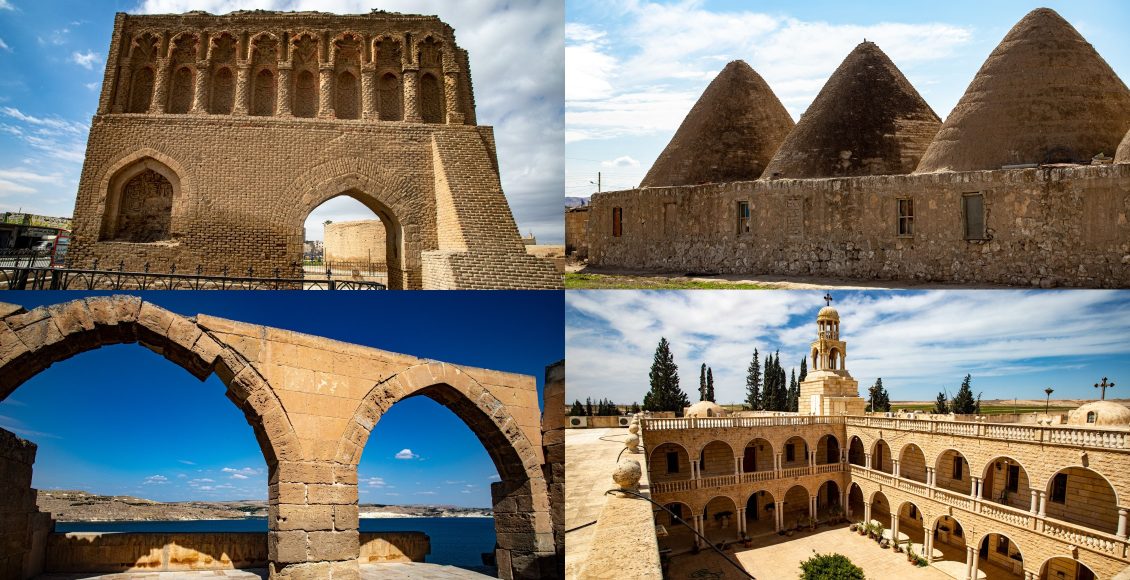
Any cursory google search of “Rojava” or “northern Syria” will likely leave you with a litany of articles, videos and photos consisting mostly of soldiers, war, and destruction. This one-sided media coverage of Rojava often fails to address the human side of the local society. Those who wish to take a deeper dive into Rojava may wonder: what do people there do with their free time? Where do they go for fun? Are there any places worth visiting?
Despite the popular conception of Rojava and Syria as vast expanses of barren land and desert, any local will tell you that the region is chock-full of places to cool off, relax, have fun, and enjoy new experiences – while learning about the rich and diverse cultural history the region has to offer. With this principle in mind, we present the tourist’s guide to Rojava’s historic sites.
The Sights Worth Seeing
Starting from the northeast corner of Rojava, the arched Ain Diwar Bridge was built by the Romans sometime during the 2nd century. Once previously spanning the Tigris River, the river now sits some 500 meters away as local geography has shifted. Historians say that the bridge was also used for astrological purposes, as stone carvings on the bridge depict zodiac signs alongside Roman cavalrymen. Later, the bridge was one of the main crossings of the famous Silk Road. The bridge at Ain Diwar is sometimes dangerous because of its proximity to the Turkish border. Occasionally, Turkish border guards will fire indiscriminately at visitors in an attempt to scare them off.
Moving further to the southwest, the city of Derik and the surrounding villages are home to some of the most beautiful natural landscapes in the Jazira region, with Mount Judi (Çiyayê Cûdî) – the presumed resting place of Noah’s Ark – looming just on the other side of the border to the north. The region also has a number of historic churches, with the name Derik itself coming from the Kurdish and Arabic words for church or monastery: dêr.
The Church of Our Lady of the Syriacs to the city’s north, dates back to the 4th or 5th century AD. The church has been known among Christian pilgrims for its ‘miraculous oil’ since the 1960s, following a purported vision of the Virgin Mary where a steady stream of oil formed on the wall where she was seen. The alleged miraculous oil prevented the church’s destruction to pave the way for a street in 1961, and the drops of oil are still visible on the church walls today.
Continuing westward, many idyllic border villages dot the region between Derik and Qamişlo, including Siwedike, Carudiye, and Derna Qulinga. These villages feature orchards and forests, springs and rivers, and open areas where locals frequently go to barbecue on Fridays and cool off during the spring and summer months.
Breathtaking scenery combines with history north of the city of Tirbespi, in the Yazidi village of Otelce, also known as Qubbe Feleke. Here, modern Yazidi graves and likenesses of the Lalish Temple sit alongside graves, whose dates have been lost to time; villagers claim that Yazidis have been in the area for at least 1,000 years.
While not as ancient as some of Rojava’s formerly well-visited tourist sites, the Jewish Market, or Ezra Market, in Qamişlo city is a fascinating glimpse at the city’s diverse heritage. The market was built by Jewish merchants who came from Nusaybin (Nisêbîn) in the 1920s – 1930s and began building Qamişlo alongside Assyrians and Armenians escaping the genocide carried out by the Ottoman Empire. Jewish merchants in Qamişlo, which became the third center for Syrian Jews after Damascus and Aleppo, had shops selling mainly spices, oils and fats, and other goods for use in the home. A walk through the market is a treat for all senses: strong scents of local spices waft through the air, and the wooden doors, counters, and shelves of many of the shops are decades old. Though now owned by Kurds and Christians, many of the market’s shops still bear the names of their former Jewish owners.
The historic synagogue in Qamişlo, nearby the Jewish market, was built in 1938. The synagogue’s main door is now locked, and the synagogue itself has mostly fallen into disrepair. Half of the synagogue complex, which was previously damaged and used as a shop by the Syrian regime, was partially restored and converted into a bookstore after the Rojava Revolution. Visitors can peer into the synagogue’s garden through a small window in the bookstore wall.
Jewish history in Qamişlo is far older than that of the city itself, and many local Kurds and Arabs still visit one ancient site. The Dome of the Jews is approximately 2,000 years old and is the burial site of rabbinic sage Yehuda ben Bathyra of Nisibis. Previously an important religious site for Jews, Arab and Kurdish Muslims would frequent the site to pray. Sitting just a few hundred meters from the Turkish border outside of Qamişlo, the site has to be approached with caution due to its proximity to the border.
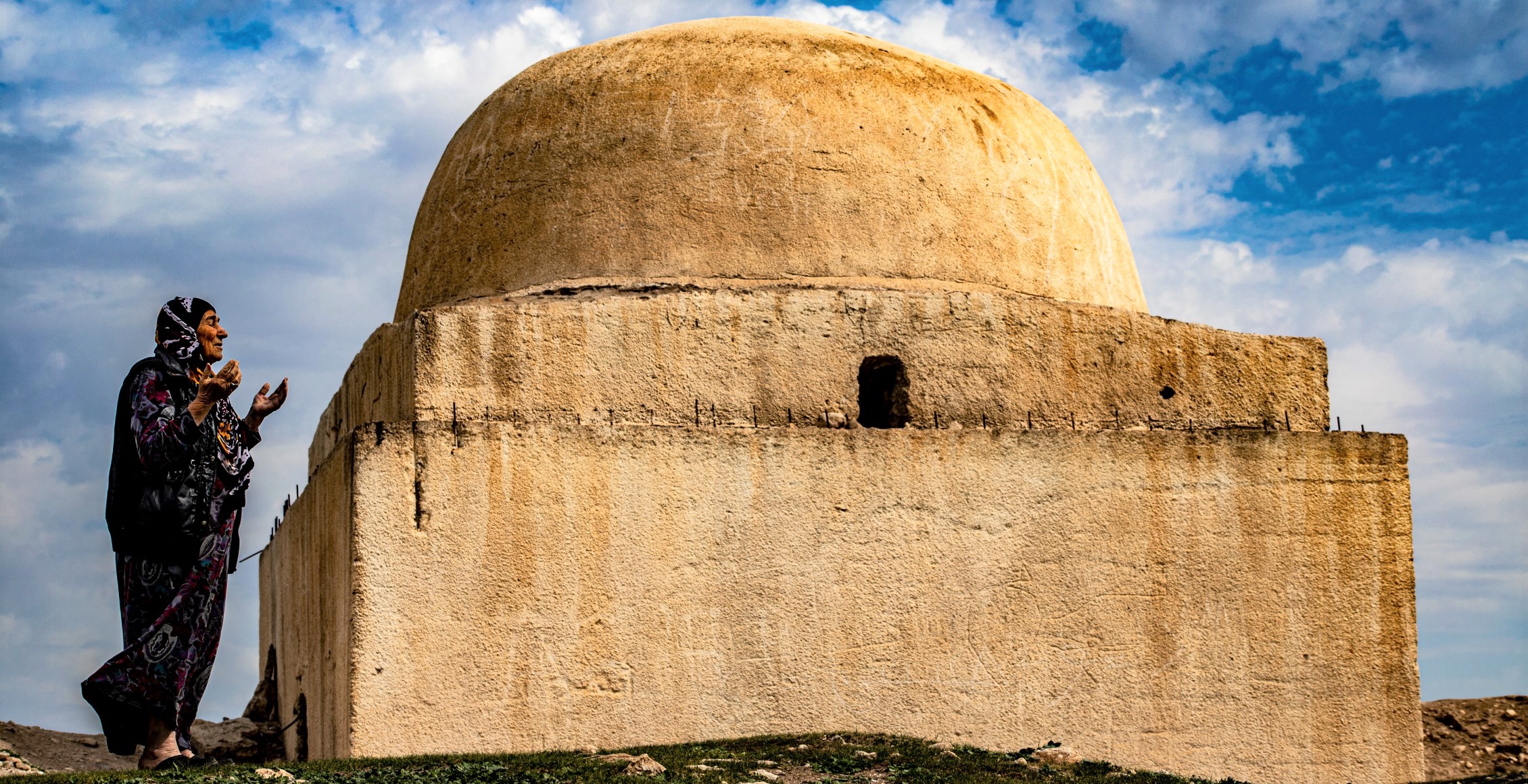
There are also several historic Christian churches built by Armenians, Assyrians, Syriacs, and Chaldeans who fled the Seyfo Genocide in the Ottoman Empire, the oldest of which is St. Jacob of Nusaybin Church, built in 1927. Outside of Qamişlo, in the village of Himo, lies a church popular with Christians from across Rojava: The Church of St. Febronia. Febronia was a nun at a monastery in Nusaybin in the 3rd century AD. According to Orthodox Christian history, Febronia refused to renounce her religion and marry the nephew of a Roman emperor, and so was tortured to death. Her remains are in a tomb located inside of the church.
Churches and monasteries are not the only once-bustling pilgrimage sites in Rojava. Tel Marouf, southeast of Qamişlo, was the center of the Khaznawi sect of the Sufi Naqshbandi order. From at least the early 20th century, sheikhs of this order constructed mosques in the villages, and Tel Marouf eventually became a popular pilgrimage site for Naqshbandi Muslims who travelled by foot all the way from other parts of Syria, Turkey, Iraq, and beyond. The city’s once-ornate mosques, decorated with colorful mosaic designs, were destroyed by al-Nusra Front in 2014, and their damaged minarets remain as a testament to the war.
The historic site at Orkesh, also known as Gire Mozan, dates back to the 4th millennium BC. The site is the first documented city belonging to the Hurrians, who later went on to build the Mitanni kingdom which stretched from present-day Tarsus in Turkey to present-day Kirkuk in Southern Kurdistan (Iraq). Orkesh is located just outside of the town of Amûdê. It is frequently visited by locals and schoolchildren on trips. The site consists of an open terrace, a temple, and a palace (though much of this remains under soil), with towering revetment walls and a massive stone staircase remaining. By far the most unique characteristic of Orkesh is its underground religious structure called an abi, a deep pit lined with stones that was once used by the ancient Hurrians for alleged necromantic purposes.
While there are thousands of historic hills in the Jazira region, only a handful have been excavated, and of these, only Orkesh’s historic traces are still visible. Other similar sites have been re-covered by soil in an effort to protect them from looting, vandalism, and the effects of weather. Sadly, nearly all of Rojava’s archaeological sites were looted and illegally excavated during the conflict in Syria. Al-Nusra Front, the Islamic State (ISIS), and even ordinary civilians searching for gold and other valuable antiquities pilfered these historic treasures since the start of the Syrian Civil War.
Within Amûdê itself, a memorial park stands in remembrance of one of the most tragic events of Rojava’s history: the Amûdê Cinema Fire. In November 1960, a group of mostly Kurdish schoolchildren were gathered to watch a film in the town; the proceeds from ticket sales were intended to go towards Algerian revolutionaries fighting the French occupation. Tragically, the cinema, which was hastily built from highly flammable materials and had only one extremely narrow door, caught fire. Hundreds of children perished in the fire, and the site was eventually made into a memorial park for the victims. The park contains photos of the victims, a statue to their memory, and a mosaic photo of Muhammad Seid Daqouri, an Arab resident of Amûdê who saved more than 20 children before perishing in the flames. A testament to ethnic solidarity in this diverse region.
Heading a little to the south, the Kizwan Mountains were once a popular destination for domestic tourists, as the area used to be covered in lush forests and was a designated national and historical site during the time of the Syrian regime. Previously, the nearby Assyrian community came from Tel Tamr and the dozens of Assyrian villages along the Khabur River to celebrate Assyrian New Year, or Akito, in the mountains.
The Kurdish name Kizwan comes from the Kurdish name for the terebinth tree, which used to cover the mountainsides. The fruit of this tree was made into a coffee-like beverage famous in Kurdish-majority areas. The Arabic name, Abdulaziz, takes its name from Sheikh Abdulaziz al-Jilani, one of the leaders in the army of the Kurdish sultan Saladin Ayyubi. Sadly, the mountains and surrounding region were deforested by civilians and militants who used the trees as fuel from the outbreak of the Syrian Civil War.
The Kizwan Mountains are home to another historic site, Sukkara Castle. The site was constructed in the 12th century during the Ayyubid period, it was used to protect the route into the Kizwan Mountains and as a storage site for grain and other vital materials. While some reconstruction has been carried out, the castle’s proximity to the front lines between the Syrian Democratic Forces (SDF) and Turkish-backed ‘Syrian National Army’ means that Turkish drones are nearly constantly overhead at the site. The castle still receives tourists from time to time, some of whom walk around the castle site before barbecuing in its shadow, but vandalism and the 2023 earthquake have degraded the site significantly.
The aforementioned Assyrian villages along the Khabur River also used to be a massive draw for both domestic and foreign tourists; the pristine villages were planted with lush trees and an array of crops, and were famous for their food and handmade wines. However, after the ISIS attacks on the villages in 2015, nearly all the villages are empty and/or destroyed, with many having only a handful of elderly inhabitants.
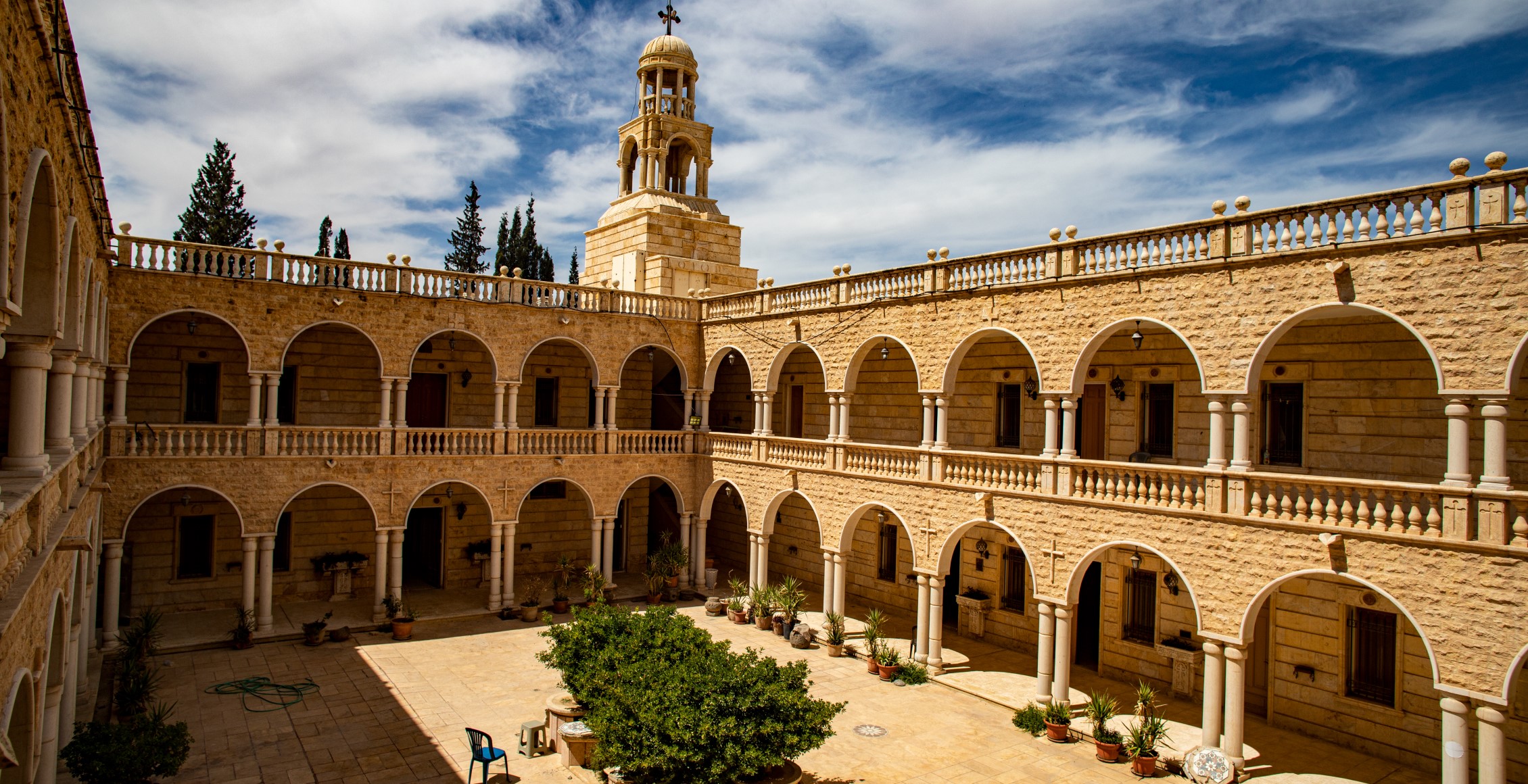
One frequently visited site which does still stand along the Khabur is the St. Mary’s Monastery at Tel Wardiat. The Syriac Orthodox Monastery, which was founded in 2000, is a massive structure. The monastery contains a church which can seat 200 people as well as bedrooms for monks, priests, tourists, and the homeless which can accommodate 50 guests. The complex, which is around 25 kilometers from the city of Hasakah (Heseke), between Hasakah and Tel Tamr, was once regularly visited by clergymen, and hosted religious courses as well as recreational camps. Monks and deacons from far and wide would visit to teach the Syriac language and Syriac religious rituals.
In 2013, the monastery was cordoned off as the Serê Kaniyê region was attacked by al-Nusra Front. Two years later, ISIS threatened the region, invading and occupying Tel Tamr and the Assyrian villages along the Khabur River. Some 200 families sought refuge in the monastery, which had served as a shelter during both wars. In 2019, the monastery would again become a refuge for those fleeing villages along the front lines in the Khabur area during Turkey’s invasion of Serê Kaniyê.
Much farther to the south, Raqqa has one of the largest still-surviving collections of historic sites and antiquities in all of northern Syria. While the Raqqa region has been inhabited since ancient times, it came into its own during the reign of Abbasid Caliph Harun al-Rashid, who made the city his summer residence in 796 AD.
Sites dating back to the Abbasid period include the Baghdad Gate and surrounding city walls, the palace complex at Qesr al-Benat, and the massive Great Mosque. The Great Mosque was heavily damaged during the period of ISIS control, and a shrine to a companion of the Prophet Muhammad located in the mosque’s courtyard was destroyed by the group in 2014.
Just across the Euphrates River from the city center sits a piece of lesser known and far less ancient, yet still interesting, history. The French Domes were built more than a century ago during the French occupation of Syria and were used as a military brothel for French soldiers. The site’s noticeable locally influenced architecture – complete with domed roofs – stands out among the newer buildings in the area. After the expulsion of the French from Syria, the site became an Islamic school, and it is now inhabited by a local family.
The only official museum in all of northern Syria, the Raqqa Archaeological Museum, sits in the city center near the Clock Roundabout. The structure itself, a small, two-story brick structure, was built in 1861 as an Ottoman administrative center, and later used by the French for the same purpose during their occupation of Syria. The museum opened in 1981, and featured thousands of artifacts as well as Arab and Islamic art collections. The ISIS occupation saw most of its contents looted, sold, and/or destroyed, and the rear part of the building damaged. The building has been rebuilt, and the museum itself is in the process of reopening (though without many of its original artifacts).
After spending a day surveying the city’s market and historic sites, Raqqa’s culinary scene alone is worth a visit. Restaurants with porches along the Euphrates River make for a great atmosphere, and fresh grilled and fried fish is expertly prepared. A visit to the city’s meat market may even lead you to a delicious delicacy – camel. Once eaten all across Syria, and particularly in Damascus, camel meat’s popularity has waned. Though restaurants no longer offer it on their menus, it can be picked up at Raqqa’s meat market and brought to a restaurant for preparation or brought along on a picnic for barbecuing.
The area of Raqqa along the Euphrates River is a perfect spot to relax and take in nature; it is also a popular swimming spot for locals on hot summer afternoons. The riverbanks are lined with small metal canoes rowed by young locals who will take guests on a short ride around the river for a small fee. While the area just next to the city is great and convenient for swimming, the area near the Qereqozax Bridge, between Kobanê and Manbij, is a less crowded but equally scenic location for swimming. Swimmers should take caution, however – especially when full, the river has a deceptively strong current.
The city of Kobanê is relatively new, growing into a small town only in the first half of the 20th century due to its location along the Berlin-Baghdad railway. Previously connected to the city of Pirsus, the establishment of the Syrian-Turkish border split the two. Kobanê’s notoriety came from its heroic resistance against ISIS in 2014, when the YPG (People’s Protection Units) & YPJ (Women’s Protection Units) valiantly fought a fierce battle against the terror group for six months, handing them their first defeat. By 2015, the city, though heavily damaged, was liberated, and began to slowly rebuild.
Though much of the city is rebuilt, one neighborhood which witnessed the heaviest fighting is preserved as the open-air Kobanê Museum. The neighborhood, previously home to the city’s Armenian community and right along the border with Turkey, still contains dozens of destroyed and half-crumbled buildings, as well as damaged vehicles and improvised cannons and mortars used by ISIS. Walking through it gives one an idea of how most of the city would have appeared during the famous battle which became known as the “Kurdish Stalingrad”.
By far the most impressive destinations for anyone visiting Rojava from near or far are the two great castles in the Euphrates region: Najm Castle (Qal’at Najm) and Jabar Castle (Qal’at Ja’bar). Najm Castle sits on the Euphrates River, on the road between Kobanê and Manbij. The site was fortified as early as the Roman period, but most of the visible constructions were built during the reign of Muslim ruler Nur ad-Din Zengi in the late 12th century AD. Jabar Castle sits around four kilometers from the city of Tabqa, on Lake Assad. Similar to Najm Castle, the site was a fortification since pre-Islamic times, but was fortified again by the army of Nur ad-Din. Both castles were damaged during the war against ISIS, who used the sites as training grounds and ammunition repositories.
Since being captured by the SDF, the sites are now popular with domestic tourists, many of whom picnic along the lake and river and enjoy a cooling swim in the summer months. The castles also have cafeterias and locations for grilling, for tourists wishing to have a barbecue alongside the water.
Under Turkish Occupation
Of note, many of Rojava’s finest tourist sites are now under occupation by Turkey’s military and Turkish-backed ‘Syrian National Army’ mercenary groups, who continue to loot and terrorize the area.
The archaeological site at Tel Halaf sits just a few kilometers from the city of Serê Kaniyê, which was invaded and occupied by Turkish forces and their proxy militias in 2019. The site dates back to the 6th millennium BC, and was used by the Hittites, Arameans, and Assyrians. Countless artifacts at the site are now on display in the Pergamon Museum in Berlin. Tel Halaf was once visited by locals who desired to learn about local history. According to the Antiquities Department of Jazira, the site was looted and illegally excavated by Turkish-backed militias, and the department lost contact with an employee guarding the site approximately six months after the invasion.
The Asfar and Najjar Estate, to the west of Serê Kaniyê, was built by two Christian families who carried out massive agricultural modernization projects in the Khabur River basin. After the families left Syria, the estate became a popular tourist destination for locals, who would spend time in the estate’s colorful gardens and tour the site’s villas. Some of the first tractors that were used to irrigate the surrounding land remained part of its history. When Turkish-backed militias overtook the area in 2019, they turned the estate into a military base and the once-lush gardens dried up.
Serê Kaniyê itself means “head of the spring” in Kurdish, and the city and the entire region were once known for their springs. The city boasted many parks where patrons could enjoy food, beverages, and argileh while sitting with their feet in fresh spring water. The sulfur spring known as Ain Kibrit, south of the Asfar and Najjar Estate, was also a destination for locals suffering from skin and bone problems.
Afrin, which is renowned for its lush natural landscape and historic landmarks, was also home to a massive number of archaeological and tourist sites. The Meidanki Dam, which sits on the Afrin River, was once a popular site for tourists due to its natural beauty. Prior to the 2018 invasion of Afrin by Turkey and ongoing hellish occupation, Meidanki Lake was a popular destination for swimming not just for Afrinis, but for all Syrians from the Aleppo region, boasting dozens of cafes and restaurants.
The archaeological site at Ain Dara in the Afrin region shows signs of habitation from the 4th millennium BC and was home to a Hittite temple dating back to 1300 BC. Notable features of the temple included massive black basalt lions and sphinxes, as well as colossal footprints carved into the temple floor. In 2018, the site was bombarded by Turkish aircraft, which destroyed the site almost entirely. Only one basalt lion remained, and this was then stolen by the Turkish-backed al-Hamzat organization in 2019; its whereabouts are still unknown.
Cyrrhus, also known as Nebi Houri, is another site now occupied by Turkish-backed militias. The ancient city was founded in the 3rd century BC by the Seleucids and enjoyed strategic importance due to its place along ancient trade routes. At various points in history, it was occupied by the Armenian Empire, Romans, Sassanids, Byzantines, Muslim caliphates, and Crusaders. It was a center for Christianity from the second century AD. Despite its decline in the Medieval period, it was a pilgrimage site and tourist destination into the modern era. The site is home to an amphitheater, basilica containing Christian relics, and ancient mausoleum. Local sources say that Turkish-backed militias have looted many of the site’s antiquities and converted the site’s mausoleum into a mosque. Revisionist plaques and other information at the site now stress its Ottoman history, while ignoring the city’s other characteristics.
What Could Be
Despite all of the conflict over the last decade in Rojava, the region has a rich history which must not be forgotten. Yes, the area has been a place of epic military triumphs by the YPG and YPJ, and also a place of extreme despair and sadness under ISIS terror – but Rojava is also a region where people laugh, sing, smile, and find joy in their everyday life. Yes, the Rojava Revolution allowed Kurds the space to culturally exist, but it also guaranteed them the ability to find the small pleasures in a barbeque on the river, without fear of a regime seeking to crush their spirit.
Hopefully, one day in the future, Rojava will be a bustling sight of international tourism (like Southern Kurdistan has become), where Kurds from across Greater Kurdistan and people from all around the world visit to see how much the area has to offer. Rojava has the chance to become a place of parks, forests, river sports, hiking, and camping. A place where children will be more familiar with family picnics than killer drones.
There is another Rojava right beneath the surface just waiting for its chance to emerge. Yes, a place of ethnic and religious co-existence – which respects gender equality and protects the environment according to ecological principles, but also a place where people enjoy themselves and interact with all the diverse history around them – realizing how the thread of the past ties them to the present. This would truly be the best way to honor the sacrifices of all those martyrs who have fallen to liberate Rojava over the last nine years.


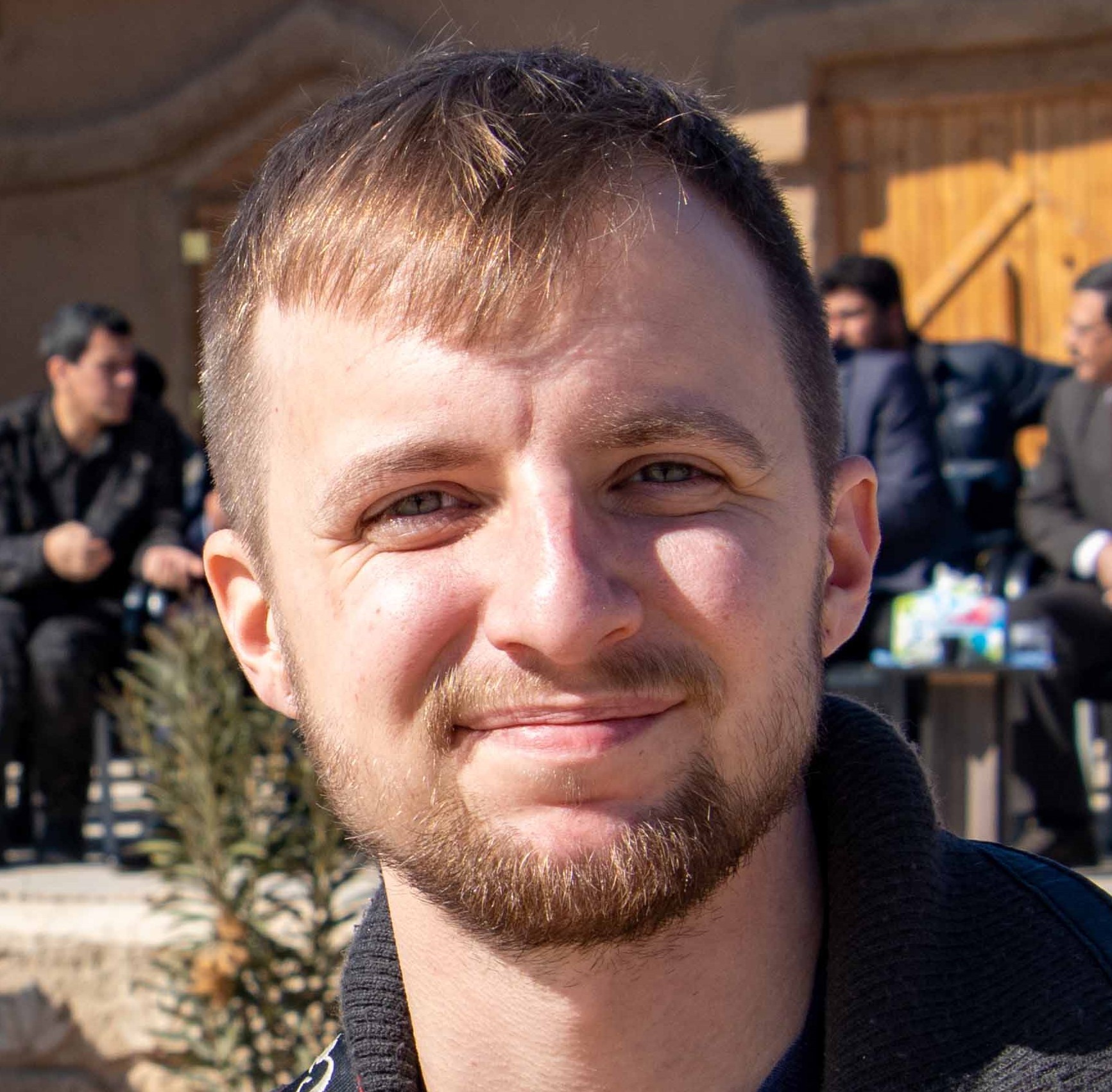
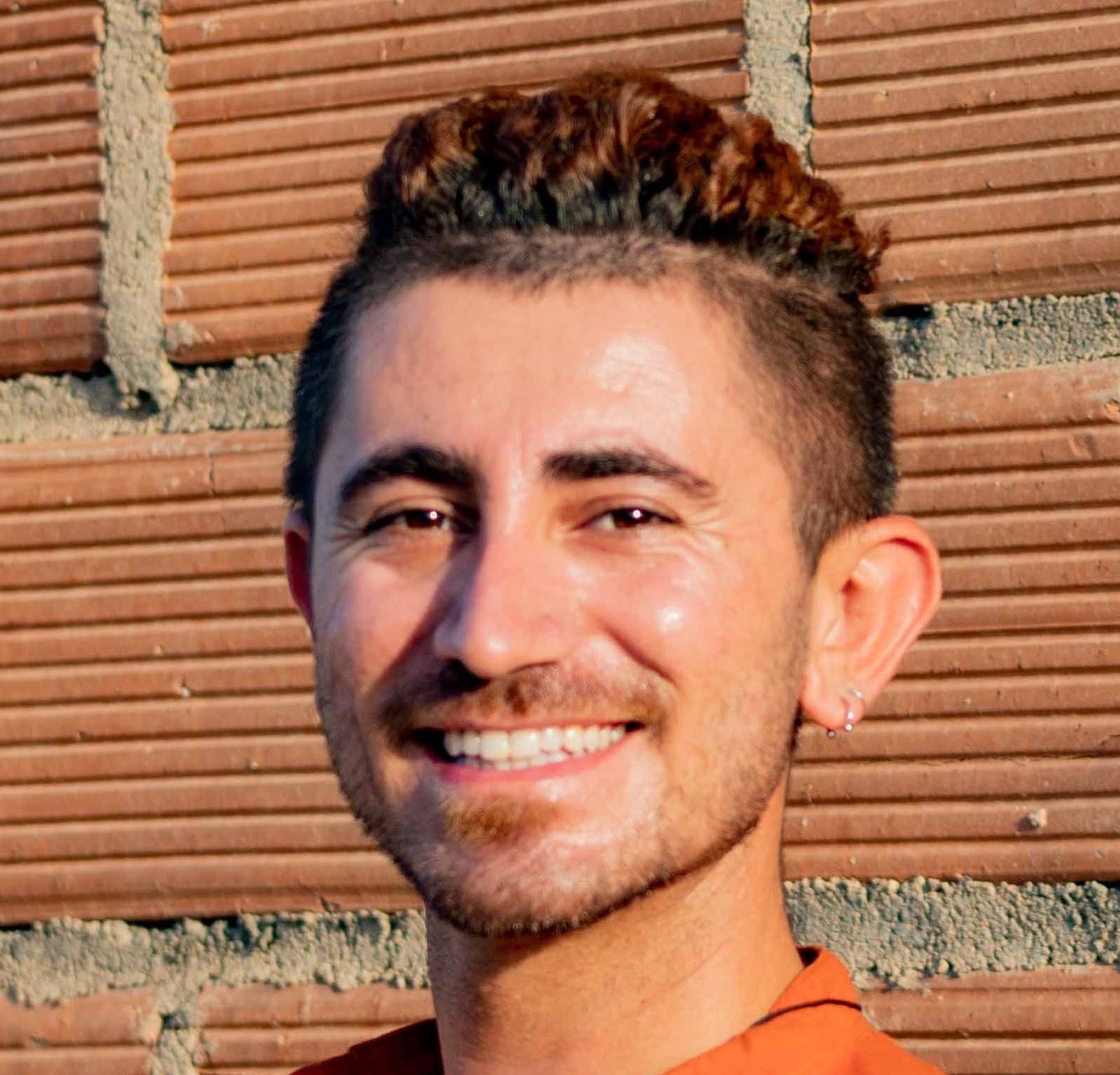
Comments are closed.